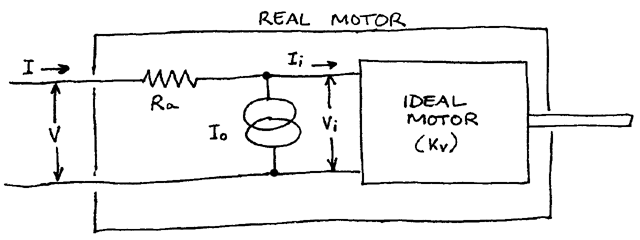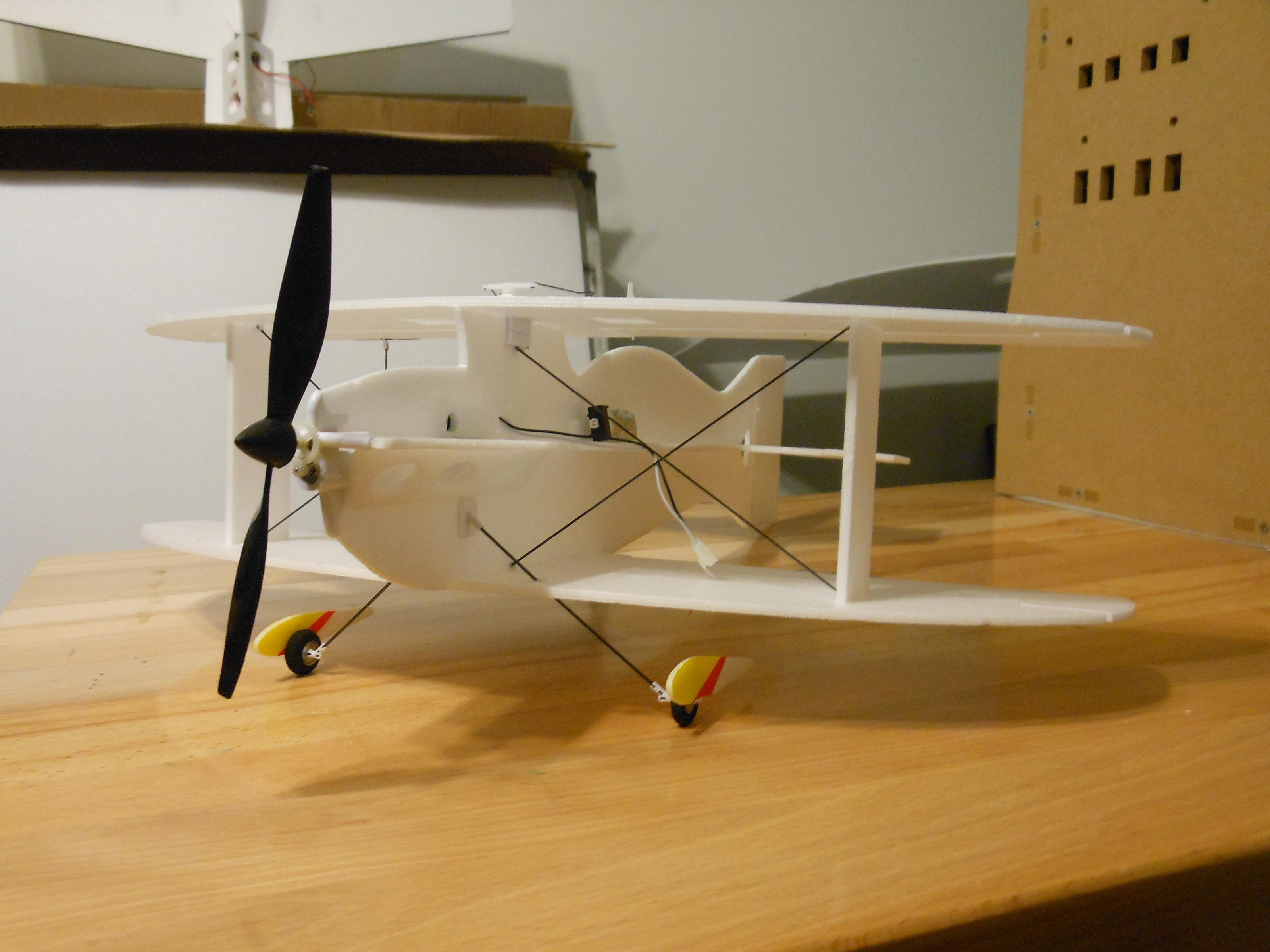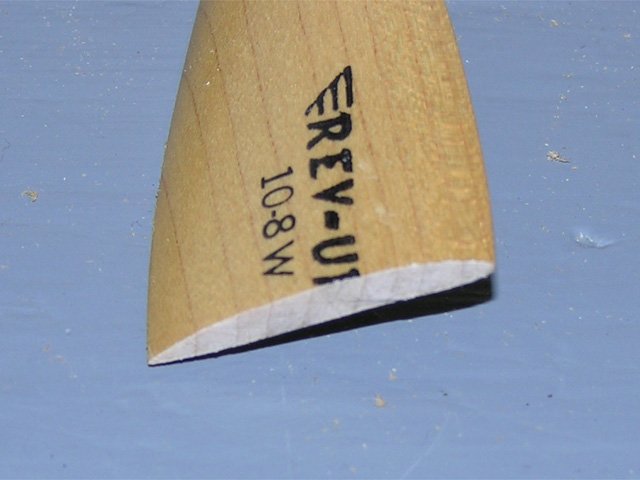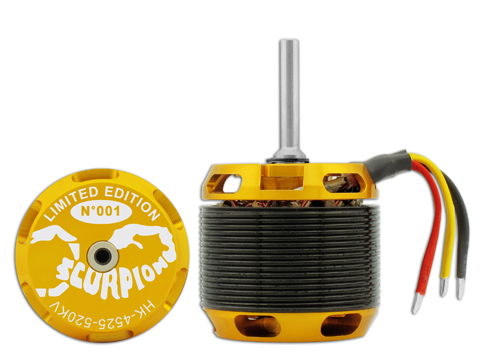Heard some good things about the CL-0820-15-9T motor as a replacement/upgrade for the motors in the UMX series. The video is highly entertaining (quite unusual for a motor spec video!), check it out. They've got a pointer to 3drankin@rcgroups, who sells some UMX kits.
blogodex = {"idx" : ["motors", "UMX"]};
Showing posts with label motors. Show all posts
Showing posts with label motors. Show all posts
Tuesday, July 15, 2014
Wednesday, October 10, 2012
What's a "C Clip Support Thrust Collar"?
Turns out it's this thing, which keeps your motor from pushing the shaft out when it's installed in a rear-facing configuration.
Klique provided this picture and notes it should be all the way up against the C clip.
Klique provided this picture and notes it should be all the way up against the C clip.
Saturday, March 10, 2012
eCalc propCalc -- Propeller Calculator!
Courtesy of the most awesome brosius85, here's a great power system calculator that seems pretty comprehensive. It has a large selection of motor data, nice charts showing the power curve, and warnings when some parameter is out of whack. Thanks Brosius!!
Friday, October 14, 2011
Sunday, June 5, 2011
Motor Math and Propeller Basics
A couple of nice articles which were pointed out by Superfly maven Tram. It looks like there's a lot more interesting things there as well.


Saturday, February 5, 2011
Balls of Steel, Scorpion Motor Edition
Scorpion HK-4525-520KV (Limited Edition):
"Each of the new HK-4525-520KV Limited Edition motor is wound with a single strand of 1.4mm wire for the highest possible efficiency. This motor is capable of running continuously at an input power of 4450 watts at 100 amps, and can handle peak inputs of 9600 watts and 215 amps for 2 seconds"
"Each of the new HK-4525-520KV Limited Edition motor is wound with a single strand of 1.4mm wire for the highest possible efficiency. This motor is capable of running continuously at an input power of 4450 watts at 100 amps, and can handle peak inputs of 9600 watts and 215 amps for 2 seconds"
Tuesday, February 1, 2011
Predicting motor rotation direction
When connecting a brushless motor to an ESC, we are taught to apply power and switch two of the wires if the blade is spinning in the wrong direction.
Is it possible to predict the blade rotation by examining the ESC/motor hookup?
<>
Is it possible to predict the blade rotation by examining the ESC/motor hookup?
<
Thursday, January 27, 2011
Forget FPV!
This just posted on the HK twitter feed. Forget FPV, I'm just gonna make my multicopter out of these and fly around looking at things with my own two eyes!
Monday, September 20, 2010
Pager Motors
Here's some links about 4mm and 8mm pager motors.
- recommending a GWS 2508 prop, with some data.
- different models at pagermotors.
- google for "namiki pager motors"
- lots on ebay, seems about $15 including shipping for 10 units.
Wednesday, August 18, 2010
Power Guidelines
Courtesy of PhilipA on RCGroups:
- 50 watts/lb: Minimum required for flight.
- 70-90 watts/lb: Trainer and slow flying aerobatic models.
- 90-110 watts/lb: Sport aerobatic and fast flying scale models.
- 110-130 watts/lb: advanced aerobatic and high speed models
- 80-100w/lb nice target for many planes.
- The Blue Wonder maxes out around 85 watts on a 3S lipo and GWS 9x5HD (straight blade) prop.
- Sufficient for up to a 16oz AUW plane with decent performance including a 4ch aileron version.
Sunday, August 15, 2010
Changing an Outrunner Motor Shaft
Abridged from HeadsUp RC:
- Remove firewall mount. Requires 1.5mm allen wrench (12 cents at Ace Hardware!). Sometimes can be quite difficult to remove.
- Remove C-clip and washer at rear of the motor that retains the shaft. Removing washer can be most difficult part, as it tends to hang in C-clip groove.
- Pull motor bell off of stator. (motor bell = outer part with the magnets, stator = inner part with windings). Do this by grasping motor tube with a pliers where the firewall mount was located, and pull on the motor bell with your fingers. There will be resistance from the magnets.
- Remove flange from the motor bell by removing 10mm retaining nut on inside of motor bell. (May be asier to remove nut if shaft removed from the flange first. Loosen two set screws on front of motor bell, then drive shaft out of flange with hammer and small punch.)
- Insert the new shaft with flange, and secure with nut on inside of motor.
- Reinstall stator, washer and C-clip.
Saturday, August 14, 2010
Thursday, August 12, 2010
The legendary Blue Wonder motor
New, improved, and red:
Turnigy 2730 Brushless Motor 1300kv
Turnigy 2730 Brushless Motor 1300kv
- Dimension: 32mm x 27mm, 43mm(with shaft)
- Weight: 28g (not including connectors)
Diameter of shaft: 3.1mm - Voltage: 2~3S
- Max current: 3.5~7.5A/20S
- Propeller: 7x3.5~9x4.7
- Pull: 250~470g
- For small parkflyer and gliders.
Wednesday, July 21, 2010
By The Numbers: Brushless Motors
Brushless motors have lots of numbers associated with them. Let's use the popular TowerPro 2408-21 as an example. It's very well documented. Here's the HobbyKing, TowerPro, and TowerPro Motor Spec pages.
Most Important Numbers
Thrust Calculation
(still in progress)
Relationship of ESC numbers to Motor Numbers
"Runner" Configuration
Brushless motors are either inrunner or outrunner. The Towerpro motor above is an outrunner.
If you need to see how equivalent two motors are, the two most important numbers to match are
Most Important Numbers
- Kv -- measured in RPM, shows the maximum rotational speed per volt of input (bigger number = faster spin = more power required).
- weight -- typically measured in grams.
- max current -- measured in amps. The maximum current draw this motor can handle for an extended period of time (important for picking your ESC. The ESC Amps should be larger than this number).
- max loaded current (60s) --measured in Amps, and usually given with a timeframe (60 seconds is common.) The maximum current draw the motor can take for a short period of time without burning up.
- Battery - number of cells
- dimension - the physical size
- shaft diameter - more powerful motors need bigger, stronger shafts. you need to know this number if you buy a prop saver. 3mm is a common value.
- poles, magnets -- not sure why these are important, maybe highter quality motors have more?
Thrust Calculation
(still in progress)
Relationship of ESC numbers to Motor Numbers
- ESC Amp number must be greater than motor Amp number, or you will burn up you ESC by pulling too much electricity through the circuit.
"Runner" Configuration
Brushless motors are either inrunner or outrunner. The Towerpro motor above is an outrunner.
- inrunner -- the motor is stationary and the motor shaft spins
- outrunner -- the motor shaft is stationary and the motor body spins
If you need to see how equivalent two motors are, the two most important numbers to match are
- Kv -- they should be close to the same power output
- Weight - they should weigh similarly
Subscribe to:
Posts (Atom)









